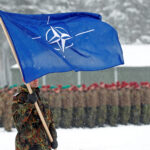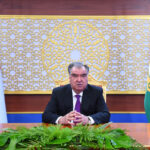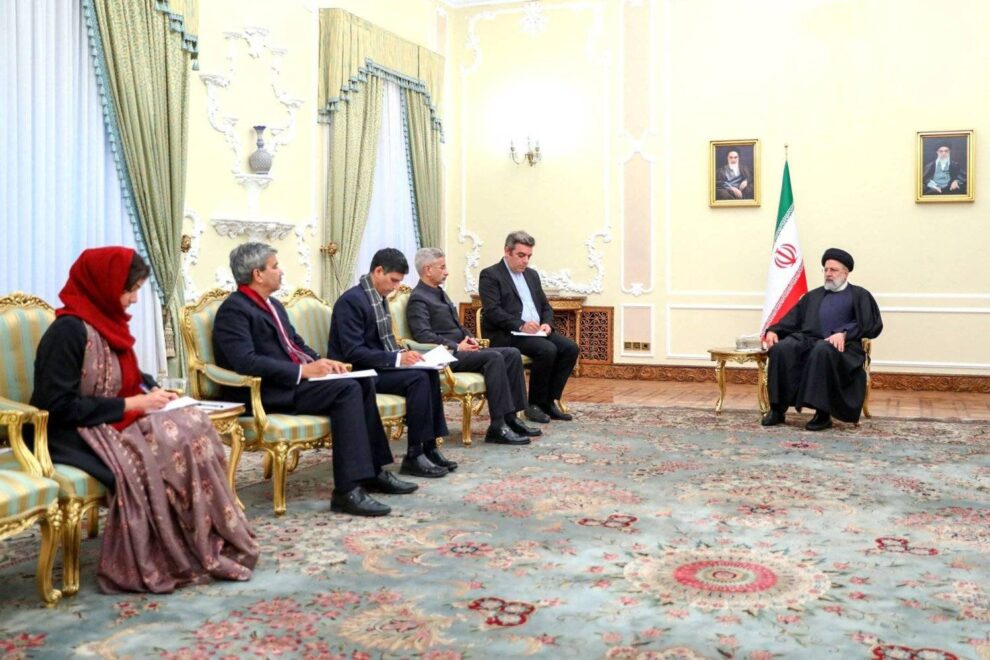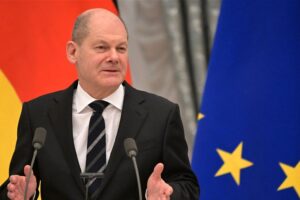Up-and-down relations between Iran and Tajikistan in the past decade shot up again after Iranian President Ebrahim Raisi’s official visit to Dushanbe on November 8-9, his second trip to the Tajik capital in 18 months.
Raisi’s visit to Tajikistan was symbolically important amid a rapprochement between the countries that overshadowed the relatively standard batch of bilateral agreements that were signed.
During the trip, Raisi and his Tajik counterpart, Emomali Rahmon, announced a historic visa-free travel agreement for their citizens and deals in trade, transportation, and culture, among others.
High-ranking visits have become a regular occurrence between the two countries in the past year — with Iranian Defense Minister Reza Qaraei Ashtiani visiting Tajikistan in October and chief prosecutor Mohammad Jaafar Montazeri leading a judiciary delegation to Dushanbe in June.
But relations haven’t always been rosy between the two Persian-speaking countries, which share close linguistic, cultural, and historical ties as well as a common key ally, Russia.
Ties were marred in the past decade by tensions that saw the severing of investment and export deals, the suspension of direct flights, and the closure of Iranian charity and culture centers in Tajikistan.
Iran angered Tajikistan in 2015 by inviting the head of the Islamic Renaissance Party of Tajikistan (IRPT) to a conference just months after the party was very dubiously banned and branded a terrorist group by Dushanbe.
Enraging Dushanbe further, IRPT leader Muhiddin Kabiri was photographed being greeted by Iranian Supreme Leader Ayatollah Ali Khamenei at the event.
The relationship plunged to a new low in 2017 when Tajik state television — a government mouthpiece — accused Iran of financing and ordering political assassinations in Tajikistan after a string of prominent public figures, including politicians and scholars, were killed between 1997 and 2004.
In response, Iran accused Tajikistan of making baseless, blatant lies.
On Again, Off Again
Amid the tensions, Rahmon didn’t attend President Hasan Rohani’s second-term swearing-in ceremony in 2017. But all seemed forgotten when Dushanbe and Tehran started mending ties and Rohani visited Dushanbe in June 2019.
In September 2020, Tajik state TV aired another controversial documentary accusing Iran of financing militant activity in Tajikistan.
Tehran called the claim a “baseless allegation” and warned Dushanbe about “the consequences of behavior” that breaches “the rules of friendly relations.”
The documentary came as the Tajik Supreme Court reportedly jailed some 50 Tajiks — former graduates of Iranian universities — on charges of treason and religious extremism in closed-door trials.
Because the Tajik state media and the judiciary reflect precise government positions on issues, Dushanbe’s motives behind delivering a new blow to its ties with Iran are unclear.
What Does The Future Hold?
Rahmon also failed to attend Raisi’s inauguration ceremony in August 2021, citing a prior engagement. But the two presidents did meet the following month, when Raisi chose Tajikistan as the destination for his first foreign trip as president, coupling it with attendance at a key regional security summit.
Bilateral ties have, since then, increasingly strengthened.
In early 2022, Dushanbe and Tehran announced plans to increase bilateral trade to $500 million in future from just $121 million in 2021. And Rahmon went to Tehran in May 2022 — his first trip to Tehran in nine years, as relations were rekindled.
Ahmet Furkan Ozyakar, a Turkish-based expert on regional politics, said Iran’s “look-toward-the-east policy under President Raisi is…a noteworthy determinant in advancing relations with Dushanbe” amid Iran’s severe economic problems due to Western sanctions over Tehran’s controversial nuclear program.
“In the upcoming months we expect more official meetings between Dushanbe and Tehran at the ministerial level as part of this rapprochement in joint military and security agreements, along with increasing trade capacities,” Ozyakar, a lecturer on international relations at Ataturk University, told RFE/RL.
But given the recent history of the ups and downs between Iran and Tajikistan, some analysts are not as optimistic.
Touraj Atabaki, a prominent Middle East and Central Asia expert, doesn’t rule out the possibility of new “problems” arising in the foreseeable future. Atabaki, professor emeritus at Leiden University, says any major political changes within one of these two countries or international developments could affect relations between Dushanbe and sanctions-hit Iran.
“Tajikistan’s approach to international affairs is different from Iran’s approach on that matter. Challenges in the world arena might either bring them closer or break them apart — challenges like Russia’s ongoing war against Ukraine or the current [Israel-Hamas] war, which threatens to spread to the wider West Asia region,” Atabaki told RFE/RL.







































